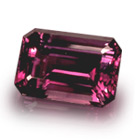Amethyst: a Royal Purple

Amethyst: a Royal Purple
Purple has long been considered a royal color so it is not surprising that amethyst has been so much in demand during history. Fine amethysts are featured in the British Crown Jewels and were also a favorite of Catherine the Great and Egyptian royalty. Amethyst, transparent purple quartz, is the most important quartz variety used in jewelry.
Leonardo Da Vinci wrote that amethyst was able to dissipate evil thoughts and quicken the intelligence (it obviously worked pretty well for him!)
Because amethyst was thought to encourage celibacy and symbolize piety, amethyst was very important in the ornamentation of Catholic and other churches in the Middle Ages. It was, in particular, considered to be the stone of bishops and bishops still often wear amethyst rings.
In Tibet , amethyst is considered to be sacred to Buddha and rosaries are often fashioned from it.
The Greek work "amethystos" basically can be translated as "not drunken." Amethyst was considered to be a strong antidote against drunkenness, which is why wine goblets were often carved from it! The gemstone still symbolizes sobriety.
Amethyst ranges in color from pale lilac to deep purple. The pale colors are sometimes called "Rose de France" and can be seen set in Victorian jewelry. The deep colors are the most valuable, particularly a rich purple with rose flashes. Amethyst is mined in Brazil, Uruguay, Bolivia and Argentina in South America and Zambia, Namibia , and other African countries.
Generally, amethyst from South America tends to be available in larger sizes than African amethyst but amethyst from Africa has the reputation for having better, more saturated, color in small sizes. Very dark amethyst, mostly in small sizes, is also mined in Australia .
Amethyst is available in a wide range of calibrated sizes and shapes, including many fancy shapes. Large fine stones may be sold in free sizes but generally amethyst is cut in standardized dimensions.

